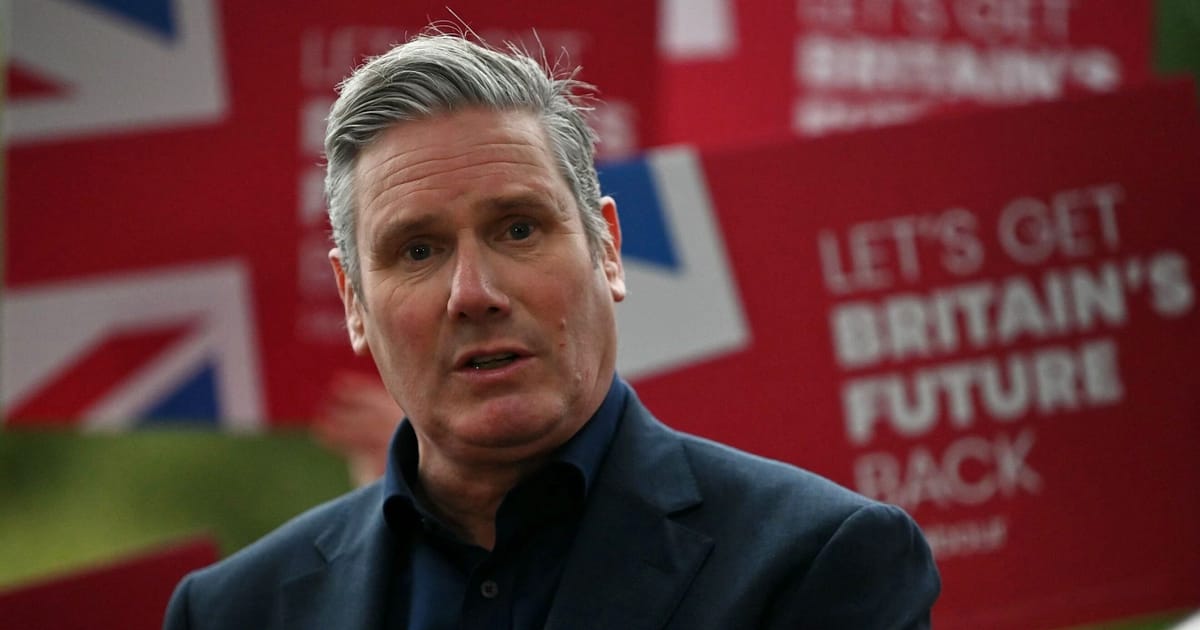LONDON — A Labour government would be “less vulnerable” to local protests against new green energy infrastructure like pylons and substations because most of it will need to be built in Conservative areas, opposition leader Keir Starmer has been told.
New analysis by the Public First consultancy, shared with POLITICO, finds that the majority of planned green infrastructure projects in the U.K. — often subject to fierce local opposition — will take place in parts of the country represented by Conservative MPs.
That could allow a Starmer-led government to avoid vocal “not in my backyard” (NIMBY) campaigns backed by Labour MPs which may otherwise scupper new development.
Labour has set a target of decarbonizing Britain’s electricity supply by 2030, five years ahead of the government’s deadline. But achieving either goal will require a huge buildout of renewable power sources and electricity grid infrastructure, including pylons and power lines.
The analysis shows that only three “Red Wall” constituencies — key seats that traditionally voted Labour but switched to the Conservatives in 2019 — are likely to host new power lines under draft plans for overhauling the country’s energy system. Just one affected seat is currently held by Starmer’s party.
Local opposition
Work to prepare the U.K.’s energy supply for net zero is likely to face fierce local opposition, with the risk that protests could hamper national plans for new grid infrastructure.
Electricity transmission company National Grid estimates that five times as many transmission lines will need to be built in the next seven years as were built in the past three decades just to hit existing clean power targets.
And polling by Public First suggests a third of voters would oppose power lines being built within three miles of their home.
The Public first analysis — commissioned by industry association Renewable UK — identifies “cost and local opposition to grid infrastructure” as the two biggest political risks to Labour’s 2030 goal, a challenge comparable to “the major building programs of the post-war era.”
Shadow Energy Secretary Ed Miliband has described the 2030 goal as the “lynchpin” of the party’s net zero plans, and Starmer has already pledged to “bulldoze” through “restrictive” planning laws to get building.
Public First’s report says newly planned infrastructure would need to clear regulatory and planning hurdles rapidly after a general election — expected next year — with spades in the ground by 2028, to have a chance of hitting the 2030 decarbonization target.
However, “any government will have to face local opposition irrespective of their target date,” warned Amy Norman, associate director at Public First and one of the report’s authors. “But Public First’s analysis shows that Labour is less vulnerable to the NIMBY electorate than the Conservatives,” she added. “By taking on those that have held up renewable projects, Labour could even stand to gain by showing voters it can get things done.”

The Red Wall and Scotland
The consultancy analyzed data shared by the National Grid Electricity Systems Operator, which has drawn up what it calls a Holistic Network Design (HND) blueprint for an expanded power grid.
Of the 36 U.K. parliamentary constituencies impacted by the HND plans, just one — Easington in north-east England — is currently a Labour seat. Only three — Tony Blair’s former Sedgefield seat, Blyth Valley in north-east England, and Great Grimsby in Lincolnshire— are “former Red Wall seats that voted Conservative in 2019,” Public First said.
Winning back Red Wall seats is central to Labour’s hopes of regaining power in the general election.
Scotland, with its wealth of offshore wind power, will also be critical to delivering a net zero power grid. Four of the affected constituencies are held by the Scottish National Party, and Public First said a Labour government could “face particular political challenges north of the border.”
“Scotland is critical to achieving any net zero power targets both in generation and transmission. But for Labour to do so by 2030, it will need to clearly demonstrate this importance to the Scottish electorate,” the report said.
Public First said a future government would need a “dedicated public campaign,” informed by polling data on the most effective messages, in order to create “national buy-in” for the 2030 project.
They also recommended that a dedicated Cabinet Office minister should be appointed to “oversee and coordinate” the program.
Dan McGrail, chief executive of industry association Renewable UK, which commissioned the report, said it was “vital that we bring local communities with us by setting out the economic, environmental and local benefits which they can expect from this radical transformation of our power system.”
The Labour Party was approached for comment.




